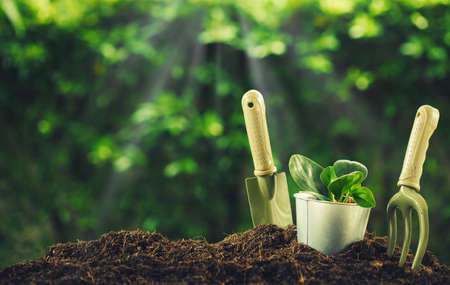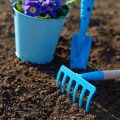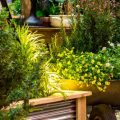1. Understanding the Role of Top Soil and Compost
When youre getting started with raised bed gardening, its important to understand what goes into creating healthy, productive soil. Two of the most essential components are top soil and compost. While they may look similar, they serve different purposes in your garden. Knowing the difference between them—and how to blend them—can make all the difference for your vegetables.
What Is Top Soil?
Top soil is the uppermost layer of natural soil found on the earth’s surface. Its usually a mix of sand, silt, clay, and organic matter. This layer is where plant roots grow and where most biological soil activity happens. In gardening, top soil provides structure and holds moisture, which helps support plant growth.
What Is Compost?
Compost is decomposed organic material made from things like kitchen scraps, yard waste, and manure. Its rich in nutrients and beneficial microbes that help plants thrive. Compost improves soil fertility, enhances drainage in clay soils, and helps sandy soils retain water.
Key Differences Between Top Soil and Compost
| Feature | Top Soil | Compost |
|---|---|---|
| Main Component | Mineral-based (sand, silt, clay) | Organic matter (decomposed materials) |
| Nutrient Content | Low to moderate | High |
| Soil Structure | Provides bulk and anchorage for roots | Improves texture and aeration |
| Water Retention | Moderate to high (depends on type) | High |
| Microbial Life | Some microbial activity | Rich in beneficial microbes |
Why Blending Top Soil and Compost Works Best for Raised Beds
A balanced mix of top soil and compost creates an ideal growing environment for vegetables in raised beds. Top soil gives your garden beds structure and root support, while compost adds nutrients and improves overall soil health. When combined properly, these two materials create a rich, well-draining medium that supports strong root development and steady plant growth.
Recommended Ratio for Raised Bed Mixes
A common blend is:
- 60% top soil: Provides structure and mineral content.
- 40% compost: Supplies nutrients and organic matter.
This ratio can be adjusted depending on what youre growing or the condition of your existing soil. For heavy feeders like tomatoes or peppers, you might want to increase the compost content slightly.
Tip:
If youre buying bagged products from a garden center in the U.S., look for labels like “screened topsoil” or “organic compost” to ensure quality. Avoid mixes that contain fillers like peat moss unless you specifically need to adjust pH or moisture retention.
The right blend of top soil and compost sets the stage for a bountiful harvest in your raised bed garden by giving your veggies exactly what they need: nutrients, structure, moisture control, and thriving microbial life.
2. Choosing the Right Top Soil for Raised Beds
Picking the right top soil is one of the most important steps in building a productive raised bed vegetable garden. Healthy vegetables start with healthy roots, and healthy roots need nutrient-rich, well-draining soil. Here’s what to look for when choosing top soil for your raised beds.
Key Qualities of High-Quality Top Soil
Not all top soil is created equal. To support strong root growth and nutrient uptake, your top soil should have the following characteristics:
| Quality | What to Look For | Why It Matters |
|---|---|---|
| Texture | Loamy mix—crumbly, not too sandy or clay-heavy | Provides good structure for roots and supports moisture balance |
| Drainage | Well-draining but retains some moisture | Prevents root rot while ensuring plants get enough water |
| Organic Content | Rich in decomposed plant matter or compost | Nourishes plants with essential nutrients naturally |
| pH Level | Slightly acidic to neutral (6.0–7.0) | Helps plants absorb nutrients more effectively |
| No Contaminants | Free from debris, chemicals, and weed seeds | Keeps your vegetables safe and reduces unwanted growth |
Tips for Buying or Mixing Top Soil
- Buy from a trusted local supplier: Ask about the source and whether it’s screened for contaminants.
- Avoid “fill dirt”: This is often poor-quality soil with little organic matter and poor drainage.
- Create your own mix: A common DIY blend is 60% top soil, 30% compost, and 10% perlite or sand for drainage.
- Test before you plant: Use a simple soil test kit to check pH and nutrient levels.
The Role of Top Soil in Root Development
Your veggies rely on their roots to access water and nutrients. If your top soil is too dense or lacks nutrients, roots struggle to grow deep and strong. Good top soil encourages roots to spread out evenly, anchoring plants well and making it easier for them to absorb what they need to thrive.
A Quick Soil Texture Test at Home
You can do a simple jar test at home to check your top soil’s texture:
- Add a handful of moist soil into a clear glass jar.
- Fill the jar with water, shake it well, then let it sit overnight.
- The layers will settle—sand at the bottom, silt in the middle, clay on top.
- A balanced mix shows a loamy texture, which is ideal for most vegetables.
Remember:
A great raised bed starts with the right foundation. Choosing high-quality top soil sets your vegetables up for success by providing strong root support, proper drainage, and essential nutrients.
![]()
3. Compost Types and Their Impact on Vegetable Growth
Compost is a powerhouse when it comes to nourishing your raised bed vegetables. It improves soil structure, boosts microbial life, and provides a steady release of nutrients that plants need to thrive. But not all compost is created equal—different types offer unique benefits depending on their ingredients and how they’re processed. Let’s take a closer look at the most common compost types used in American gardens and how each one supports healthy vegetable growth.
Yard Waste Compost
Yard waste compost is made from grass clippings, leaves, small branches, and other green or brown plant materials collected during landscaping or lawn maintenance. This type of compost is rich in carbon and helps improve soil texture and drainage. Its great for loosening up heavy clay soils and adding organic matter.
Pros:
- Readily available in most suburban areas
- Improves soil aeration and water retention
- Low cost or often free from local municipalities
Cons:
- Nutrient levels can vary widely
- If not properly composted, may contain weed seeds
Food Scrap Compost
This compost comes from kitchen waste like fruit and vegetable peels, coffee grounds, eggshells, and other biodegradable food items. When combined with carbon-rich materials like shredded paper or dried leaves, food scrap compost becomes a nutrient-dense amendment perfect for feeding hungry vegetables.
Pros:
- Packed with essential nutrients like nitrogen and potassium
- Reduces household food waste
- Encourages beneficial microbial activity in soil
Cons:
- Takes time to break down fully
- If not managed correctly, can attract pests or produce odors
Manure-Based Compost
This type of compost includes decomposed animal manure—commonly from cows, horses, chickens, or rabbits—often blended with straw or bedding material. It’s high in nitrogen and excellent for boosting soil fertility quickly. However, it must be well-aged or “composted” to avoid burning plants or introducing pathogens.
Pros:
- Nitrogen-rich for leafy greens and fast-growing veggies
- Adds vital organic matter and microbes to soil
- Aids in long-term soil fertility improvement
Cons:
- If fresh, may harm plants due to high ammonia levels
- Poorly processed manure can carry pathogens or weed seeds
Comparison of Common Compost Types
| Compost Type | Key Nutrients | Best For | Potential Drawbacks |
|---|---|---|---|
| Yard Waste Compost | Carbon-rich (low N) | Improving texture; clay-heavy soils | May contain weed seeds if not hot-composted properly |
| Food Scrap Compost | Nitrogen, potassium, phosphorus | General vegetable nutrition; boosting microbial life | Attracts pests if unmanaged; odor potential |
| Manure-Based Compost | High nitrogen content; some phosphorus & potassium | Leafy greens; nutrient-depleted soils | Needs aging to avoid burning plants; pathogen risk if raw |
Selecting the right type—or combination—of compost for your raised beds depends on your specific crop needs and existing soil conditions. Many gardeners find success by blending two or more types to create a balanced mix that delivers both immediate nutrition and long-term soil health. As you build your raised bed garden, keep experimenting with different compost blends to see what works best for your vegetables.
4. Perfecting the Soil-to-Compost Ratio
Getting the right mix of top soil and compost is key to growing strong, healthy vegetables in raised beds. A well-balanced blend ensures your plants get enough air, hold onto moisture without getting soggy, and have access to the nutrients they need to thrive.
Why the Right Ratio Matters
If your soil is too heavy with top soil, it can become compacted, limiting root growth and water drainage. On the other hand, too much compost might cause the soil to dry out quickly or lead to nutrient imbalances. Finding that sweet spot helps create a light, fertile growing environment that supports plant health from seedling to harvest.
Recommended Soil-to-Compost Ratios
Below is a simple guide to help you create an ideal blend for your raised garden beds:
| Component | Recommended Percentage | Description |
|---|---|---|
| Top Soil | 60% | Provides structure and holds moisture; should be loose and well-draining. |
| Compost | 40% | Adds organic matter, boosts nutrients, improves microbial activity. |
Adjusting for Plant Needs
This 60/40 ratio works great for most vegetables like tomatoes, peppers, carrots, and leafy greens. However, you can tweak it slightly depending on what youre growing:
- Leafy Greens (e.g., lettuce, spinach): May benefit from a little more compost (up to 50%) for higher nitrogen levels.
- Root Vegetables (e.g., carrots, radishes): Prefer looser soils—consider adding some coarse sand or perlite if drainage is slow.
Tips for Mixing Your Blend
- Mix thoroughly: Combine materials in small batches to ensure even distribution of compost and top soil.
- Avoid cheap fillers: Stick with high-quality top soil free of clay clumps or debris.
- Mature compost only: Use fully decomposed compost to avoid burning young plants or introducing pathogens.
A properly mixed soil-to-compost ratio sets the foundation for healthy raised bed gardening. With the right balance, youll enjoy better yields and stronger plants all season long.
5. Maintenance Tips for Long-Term Soil Health
Keeping your raised bed garden thriving year after year takes more than just a one-time soil mix. Even the best topsoil and compost blends need ongoing care to maintain fertility and structure. Here’s how to keep your raised bed soil productive over the long haul.
Seasonal Compost Top-Ups
Adding a fresh layer of compost at least once or twice a year is essential for replenishing nutrients lost during the growing season. A 1- to 2-inch layer of quality compost in early spring and again in fall can help maintain rich, balanced soil that supports strong vegetable growth.
Recommended Compost Application Schedule
| Season | Compost Depth | Purpose |
|---|---|---|
| Early Spring | 1–2 inches | Boosts nutrient levels before planting |
| Late Fall | 1 inch | Rebuilds organic matter after harvest |
Grow Cover Crops During the Off-Season
If you’re not planting during cooler months, consider sowing cover crops like clover, rye, or field peas. These “green manures” protect your soil from erosion, suppress weeds, and even add nutrients—especially nitrogen—back into the soil when turned under before spring planting.
Popular Cover Crops for Raised Beds
| Cover Crop | Main Benefit | When to Plant |
|---|---|---|
| Clover (Crimson or White) | Adds nitrogen, attracts pollinators | Late summer to early fall |
| Winter Rye | Erosion control, weed suppression | Fall (before first frost) |
| Austrian Field Peas | Nitrogen fixer, adds biomass | Late summer to early fall |
Avoid Nutrient Depletion with Crop Rotation & Diversity
Growing the same vegetables in the same spot every year can drain specific nutrients. Rotate crops by plant family (e.g., tomatoes, carrots, lettuce) each season to balance nutrient use. Mixing in a variety of vegetables also encourages healthier soil biology.
Simple Crop Rotation Plan Example:
- Year 1: Tomatoes (heavy feeders)
- Year 2: Beans or peas (nitrogen fixers)
- Year 3: Leafy greens or root crops (light feeders)
Avoid Overworking the Soil
Tilling too often can break down soil structure and harm beneficial microbes. Instead of deep digging each season, try “no-till” methods where you layer compost and plant directly into it. This keeps the ecosystem intact while still feeding your veggies.
Keep Soil Moist but Not Soggy
Your soil blend may have great drainage, but consistent watering habits are still key. Use mulch like straw or shredded leaves to retain moisture and reduce evaporation during hot spells. A drip irrigation system can also help maintain steady moisture levels without overwatering.
Test Your Soil Every Few Years
If your plants start looking weak despite good compost and watering practices, it might be time for a soil test. Local extension services or garden centers often offer affordable testing kits that can tell you if you’re low on any key nutrients like phosphorus or potassium.
Caring for your raised bed soil isn’t complicated—it just takes a little seasonal attention. By topping up with compost, rotating crops, using cover crops, and watering wisely, you’ll create a healthy environment where vegetables can thrive year after year.


